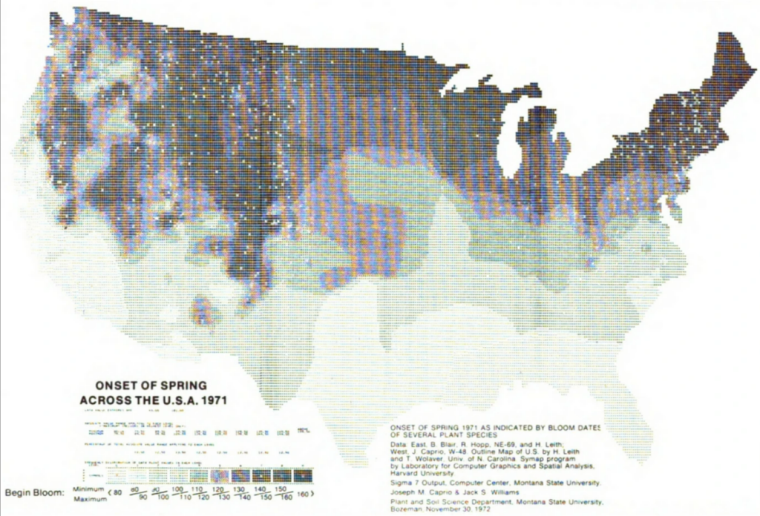
Joe Caprio initiated the first spatially extensive phenology monitoring in the United States. As a professor in the College of Agriculture at Montana State University, he collaborated with agricultural experiment stations in the 1950s to employ phenology to characterize seasonal weather patterns and improve predictions of crop yield. This project eventually included around 2,500 volunteer observers distributed throughout 12 Western states.
Here at the USA National Phenology Network, we see ourselves as carrying on Joe's legacy. We feel honored to have known him and continue to benefit from the effort he began more than half a century ago.
You're invited to read his obituary in the Bozeman Daily Chronicle.
You may also view Caprio's "A collection of the annual 'reports to cooperators of the phenological survey in the western region of the United States' and related phenological information for the period 1956-1992" scanned document. ![]() (71.2 MB)
(71.2 MB)
An Interview with Dr. Caprio
Joe's granddaughter, Charlene Shovic interviewed him in January, 2010, and Dr. Kathryn Thomas transcribed excerpts related to phenology and the lilac network.
Our co-founders Mark D. Schwartz and Julio Betancourt share some words on Dr. Caprio:
Joe Caprio’s important early contributions changed the direction of phenological research in the USA. Many of my own research accomplishments would not have been possible, had Joe not had the vision and drive to create the Western States Phenology Network, which was soon followed by a similar, though smaller phenology network in the Eastern USA. The present and future generations will always owe a debt of gratitude to Dr. Caprio. My hope is that the USA National Phenology Network will be successful in protecting and expanding his incredible legacy to phenological research in this country.
- Dist. Prof. Mark D. Schwartz, November 3, 2011
Chair, Geography Department, University of Wisconsin-Milwaukee
Chair, USA National Phenology Network Advisory Committee

L-R: Joe Caprio and Mark Schwartz
I took this photo in August 2005 during the first workshop that Mark Schwartz and I organized in Tucson to explore the possibility of mounting a USA National Phenology Network. We asked Joe Caprio to give an after-dinner presentation on the beginnings of the Western States Phenology Network that he launched in 1956, which was the precursor to the USA-NPN. Dinner was served late that evening and Joe, then 81, didn't start his presentation until nearly 9 p.m., which he gracefully admitted was past his bedtime. In Joe's own words:
"It is quite an honor for me to be invited to participate in this workshop with this very distinguished group of scientists. When I started the phenology program in Montana in 1956 some associates were unfamiliar with this field of study. Most of my professional career has been concerned with phenology, so it is a thrill for me to be here to be involved with planning a National Phenological Network....To put it concisely, a National Phenology Network is needed to assist in making more rational decisions on matters relating to the impact of climate and climate change, especially in relation to biotic responses."
In the years that followed, Joe and his wife, Mickey, would leave their home in Bozeman and winter in Tucson. He would always call when they came into town. When the USA-NPN office opened in 2007, Joe visited and beamed with pride and excitement. The phenology community owes Joe a debt of gratitude, and we will miss him sorely.
- Julio L. Betancourt, USGS, October 31, 2011